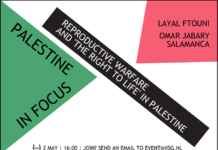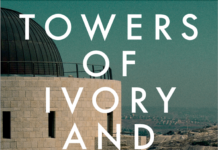Abby Sewell & Fadi Tawil
AP / September 8, 2023
SIDON, Lebanon – Clashes resumed in Lebanon’s largest Palestinian refugee camp overnight, with heavy gunfire and shelling wounding at least 20 people and prompting residents of the camp and the surrounding area to flee on Friday.
Earlier this summer, there were several days of street battles in the Ain al-Hilweh camp between Palestinian President Mahmoud Abbas’ Fatah movement and Islamist groups after Fatah accused the Islamists of gunning down one of their military generals on July 30. Those street battles left at least 13 dead and dozens wounded, and forced hundreds to flee from their homes.
An uneasy truce has been in place since August 3, but clashes were widely expected to resume as the Islamist groups have not handed over the accused killers of the Fatah general, Mohammad “Abu Ashraf” al-Armoushi to the Lebanese judiciary, as demanded by a committee of Palestinian factions last month.
The committee announced on Tuesday that their joint security forces would launch raids in search of the accused killers.
Maher Shabaita, head of Fatah in the Sidon region, told The Associated Press that the Islamist groups had launched an attack Thursday night in an attempt to forestall plans by Palestinian forces to clear militants out of schools they had been occupying in the camp.
By late morning Friday, the fighting had at least temporarily subsided, but clashes intermittently flared up again. Hundreds of people displaced from their homes were sheltering in a nearby mosque and in the courtyard of the municipality building of the city of Sidon, which is adjacent to the camp.
U.N. Resident and Humanitarian Coordinator for Lebanon Imran Riza in a statement Friday urged the militants to call a truce and vacate the schools. The continued use of the schools by armed groups “amounts to gross violations” of international law, he said, “endangering children’s rights to a safe learning environment, and jeopardizing their future and the future of their community.”
Lebanon’s state-run National News Agency reported that 20 people were wounded, including an elderly man, and transported to hospitals overnight. Shabaita said the wounded included three civil defense volunteers who came under shelling as they were working to extinguish fires.
Lebanon’s General Security agency said that one of its officers suffered a head wound from a stray bullet that hit him outside the camp. Lebanese forces do not go into the camp under a standing agreement but provide security around it.
There were no immediate reports of deaths. The public Lebanese University announced it would close its branches in Sidon and postpone scheduled exams in light of the fighting.
Officials with the U.N. agency for Palestinian refugees, UNRWA, could not immediately give information on the number of casualties or displaced from the camp.
UNRWA appealed last week for $15.5 million to repair infrastructure damaged in the last round of clashes in the camp, provide alternative education locations for children whose schools were damaged or occupied by militants, and give cash assistance to people who have been displaced from their homes.
_______
Clashes between Palestinian factions resume in Lebanon’s Ain al-Hilweh camp
Al-Jazeera / September 8, 2023
Some 20 people injured as armed confrontations between Fatah and hardline groups begin again in Ain al-Hilweh refugee camp.
Clashes between rival factions have resumed in Lebanon’s largest Palestinian refugee camp, with heavy gunfire and shelling wounding at least 20 people and prompting residents of the camp and the surrounding area to flee.
Reporting from outside the Ain al-Hilweh camp on Friday, Al Jazeera’s Zeina Khodr said dozens of families had escaped the fighting overnight between members of the Fatah movement and hardline groups and were now sleeping in the courtyard of a mosque.
“Children are telling us that they managed to escape in an ambulance but the ambulance came under fire,” she said. “Mothers are saying that their children were screaming.”
Khodr said the fighting in the camp, which is about one square kilometre and houses more than 63,000 registered refugees, is part of a decades-long struggle for power and control between Palestinian President Mahmoud Abbas’ Fatah and the armed groups, which call themselves the Muslim Youth.
There had previously been several days of street battles in the Ain al-Hilweh camp between the factions after Fatah accused the groups of shooting dead one of their military generals on July 30.
Those street battles left at least 13 dead and dozens wounded, and forced hundreds to flee from their homes.
An uneasy truce has been in place since August 3, but clashes were widely expected to resume as the groups have not handed over the accused killers of the Fatah general, Mohammad “Abu Ashraf” Al-Armoushi to the Lebanese judiciary as demanded by a committee of Palestinian factions earlier this month.
A committee of Palestinian factions in Ain al-Hilweh announced on Tuesday that their joint security forces would launch raids in search of the accused killers.
Khodr said residents had been living in fear “because for them it wasn’t a question of if but of when there would be a new bout of violence”.
Maher Shabaita, head of Fatah in the Sidon region, told The Associated Press news agency that the groups had launched an attack Thursday night in an attempt to forestall plans by Palestinian forces to clear armed fighters out of schools they had been occupying in the camp.
By late morning on Friday, the fighting had at least temporarily subsided.
Lebanon’s state-run National News Agency reported 20 people were wounded, including an elderly man, and transported to hospitals overnight. Shabaita said the wounded included three civil defence volunteers who came under shelling as they were working to extinguish fires.
There were no immediate reports of deaths. The public Lebanese University announced it would close its branches in the city of Sidon, which is adjacent to the camp, and postpone scheduled exams in light of the fighting.
Ain al-Hilweh, which was created for Palestinians who were forcibly displaced by Zionist paramilitaries in the run-up to Israel’s establishment in 1948, is now an overcrowded neighbourhood of Sidon.
Thousands of Palestinians who sought refuge from the war in neighbouring Syria have also joined the camp in recent years.
By long-standing convention, the army does not enter Palestinian refugee camps – now bustling but impoverished urban districts – leaving the factions themselves to handle security.
Officials with the UN agency for Palestinian refugees, UNRWA, could not immediately give information on the number of casualties or displaced.
UNRWA appealed last week for $15.5m to repair infrastructure damaged in the last round of clashes in the camp, provide alternative education locations for children whose schools were damaged or occupied by fighters, and give cash assistance to people who have been displaced from their homes.
SOURCE: AL JAZEERA AND NEWS AGENCIES
______
Renewed clashes in Lebanon’s Ain al-Hilweh refugee camp as truce collapses
Nada Homsi
The National / September 8, 2023
Battles between armed groups in the Palestinian refugee camp in south Lebanon have left at least 33 people wounded.
At least 33 people have been wounded in renewed clashes between armed factions in Lebanon’s largest camp for Palestinian refugees, the Islamic Medical Association said on Friday.
The violence in Ain al-Hilweh between Fatah – the camp’s dominant faction – and militants affiliated with Al-Qaeda started late on Thursday, breaking a weeks-long ceasefire.
Videos on social media showed dozens of residents escaping areas near the fighting on foot and in cars.
In another video, dozens of rocket-propelled grenades streaked from one end of the camp to the other as the sound of machinegun fire echoed in the area.
The fighting, which continued into Friday, caused a wave of displacement in the camp near the southern port city of Saida. A “large number” of Ain al-Hilweh residents fled their homes, heading towards the Musali Mosque near the camp, NNA reported.
Local aid groups said at least 1,300 people had been displaced.
Mohammad Safadi, a member of the Musali Mosque committee who lives near Ain al-Hilweh, said 950 people from the camp and surrounding areas were sheltering at the mosque, which has become a central point for the relocation of displaced residents.
“Right now around 100 of the 950 people at the mosque are waiting to be transported to other locations in Saida,” he said. “We transported 350 people last night.”
He said the mosque committee had an emergency plan in place to move everyone to schools if the fighting, which was still continuing at noon, came too close to the mosque.
Ain al-Hilweh residents had been expecting renewed battles since last month, when fighting between Fatah and a small network of militants killed 13 people and displaced about 2,000.
Many of those displaced in the current round of fighting were also displaced last month.
Abu Mahmoud, a 75-year-old carpenter, said he and his family had left the camp on Thursday evening for the second time in a month after they heard the first sounds of battle.
“For a month, we haven’t slept properly, wondering when the next round of fighting was going to come,” he told The National. “As soon as we heard the first explosion, we knew it was time to go.”
His furniture workshop was destroyed in the fighting that erupted in late July following the killing of an Islamist extremist.
The extremist’s death, followed by an ambush that killed five Fatah members including military leader Abu Ashraf al-Armoushi, set off a chain of retaliatory clashes that lasted nearly a week, causing significant destruction within the camp.
Since then, the militants have fortified their positions in two UN compounds within the camp that contain eight schools, refusing to leave despite condemnation from the world body.
Fatah had previously given Islamist extremist groups – among them Al-Qaeda-affiliated Jund al-Sham – a deadline to surrender the killers of Al-Armoushi, or face retribution.
The deadline passed last week without the killers being handed over.
“Intensive contacts” were being made between Lebanese and Palestinian leaders on Friday in an attempt to restore calm, Lebanese media reported.
Ain Al Hilweh is home to more than 54,000 registered refugees. It was created for Palestinian refugees who were forcibly expelled from their land in 1948 during the creation of what is now Israel.
In the past decade, the camp has earned a reputation for being a haven for outlaws and small networks of Islamist extremists.
Fatah has for years attempted to contain their presence.
While clashes in Ain al-Hilweh between rival factions are not uncommon, recent battles have been especially ferocious due to the high-profile nature of Al-Armoushi’s assassination.
Thousands of Palestinians seeking refuge from Syria’s civil war have also moved into the camp in recent years.
UNRWA, the UN agency for Palestinian refugees, called for factions to bring an urgent end to the fighting.
The violence, “along with the ongoing takeover of eight UNRWA schools, are preventing the access of nearly 6,000 children who are about to begin their school year”, it said.
The Lebanese University in Saida also announced the closure of its branches on Friday morning “for the safety of students, professors and employees”.
By long-standing convention, the Lebanese army does not enter Palestinian refugee camps, leaving residents to handle security.
Fatah, in a statement carried by state media, apologized “for the unintentional targeting and burning of civilian homes in the camp and the city”.
Nada Homsi is a correspondent at The National’s Beirut bureau












